#Emile Sherman
Explore tagged Tumblr posts
Text
One Life
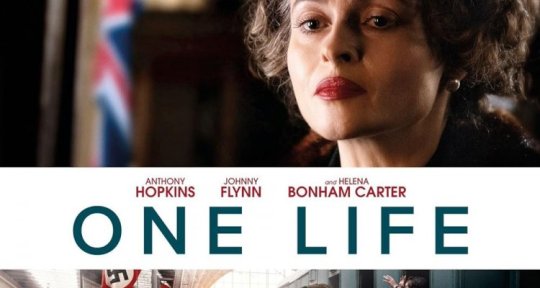
✔️ 𝐒𝐓𝐑𝐄𝐀𝐌𝐈𝐍𝐆 𝐎𝐑𝐀 𝐐𝐔𝐈 ▶ https://t.co/MCkfoGTwYz
:: Trama One Life ::
Vigilia della Seconda Guerra Mondiale, Nicholas Winton, londinese, 29 anni, agente di borsa, avvertendo la minaccia dell'invasione della Germania di Hitler organizza un piano di salvataggio, noto come "Operazione Kindertransport" per centinaia di bambini, molti di religione ebraica, prima dell'inizio del conflitto. Grazie a Martin Blake, che gli aveva chiesto di andare a Praga per aiutarlo a coordinare le operazioni del Comitato Britannico per i rifugiati della Cecoslovacchia e altre figure centrali come Doreen Warriner e di sua madre Babette che intanto collaborava da Londra, Winton riesce a far partire otto treni con a bordo centinaia di bambini che raggiungono la Gran Bretagna dove vengono ospitati da famiglie affidatarie. Ne era previsto un nono, ma il giorno in cui doveva partire, il 1° settembre 1939, Hitler ha invaso la Polonia e i confini in Europa sono stati chiusi. Nella seconda metà degli anni '80, l'impegno di Winton viene finalmente riconosciuto pubblicamente quando ha avuto l'occasione di incontrare quei bambini ormai adulti nel corso della trasmissione della BBC That's Life!. Alla fine ne ha salvati 669 dai campi di concentramento e verrà denominato come lo "Schindler britannico".
Un film (in Italiano anche pellicola) è una serie di immagini che, dopo essere state registrate su uno o più supporti cinematografici e una volta proiettate su uno schermo, creano l'illusione di un'immagine in movimento.[1] Questa illusione ottica permette a colui che guarda lo schermo, nonostante siano diverse immagini che scorrono in rapida successione, di percepire un movimento continuo.
Il processo di produzione cinematografica viene considerato ad oggi sia come arte che come un settore industriale. Un film viene materialmente creato in diversi metodi: riprendendo una scena con una macchina da presa, oppure fotografando diversi disegni o modelli in miniatura utilizzando le tecniche tradizionali dell'animazione, oppure ancora utilizzando tecnologie moderne come la CGI e l'animazione al computer, o infine grazie ad una combinazione di queste tecniche.
L'immagine in movimento può eventualmente essere accompagnata dal suono. In tale caso il suono può essere registrato sul supporto cinematografico, assieme all'immagine, oppure può essere registrato, separatamente dall'immagine, su uno o più supporti fonografici.
Con la parola cinema (abbreviazione del termine inglese cinematography, "cinematografia") ci si è spesso normalmente riferiti all'attività di produzione dei film o all'arte a cui si riferisce. Ad oggi con questo termine si definisce l'arte di stimolare delle esperienze per comunicare idee, storie, percezioni, sensazioni, il bello o l'atmosfera attraverso la registrazione o il movimento programmato di immagini insieme ad altre stimolazioni sensoriali.[2]
In origine i film venivano registrati su pellicole di materiale plastico attraverso un processo fotochimico che poi, grazie ad un proiettore, si rendevano visibili su un grande schermo. Attualmente i film sono spesso concepiti in formato digitale attraverso tutto l'intero processo di produzione, distribuzione e proiezione.
Il film è un artefatto culturale creato da una specifica cultura, riflettendola e, al tempo stesso, influenzandola. È per questo motivo che il film viene considerato come un'importante forma d'arte, una fonte di intrattenimento popolare ed un potente mezzo per educare (o indottrinare) la popolazione. Il fatto che sia fruibile attraverso la vista rende questa forma d'arte una potente forma di comunicazione universale. Alcuni film sono diventati popolari in tutto il mondo grazie all'uso del doppiaggio o dei sottotitoli per tradurre i dialoghi del film stesso in lingue diverse da quella (o quelle) utilizzata nella sua produzione.
Le singole immagini che formano il film sono chiamate "fotogrammi". Durante la proiezione delle tradizionali pellicole di celluloide, un otturatore rotante muove la pellicola per posizionare ogni fotogramma nella posizione giusta per essere proiettato. Durante il processo, fra un frammento e l'altro vengono creati degli intervalli scuri, di cui però lo spettatore non nota la loro presenza per via del cosiddetto effetto della persistenza della visione: per un breve periodo di tempo l'immagine permane a livello della retina. La percezione del movimento è dovuta ad un effetto psicologico definito come "fenomeno Phi".
1 note
·
View note
Text
Foe Movie Review!
Foe is a 2023 dystopian science fiction film directed by Garth Davis and starring Saoirse Ronan and Paul Mescal. The film is based on the 2018 novel of the same name by Iain Reid. The film follows Hen and Junior, a couple living on a remote farm in a near-future world where climate change has devastated the planet. Their quiet life is disrupted when a mysterious stranger arrives at their door…
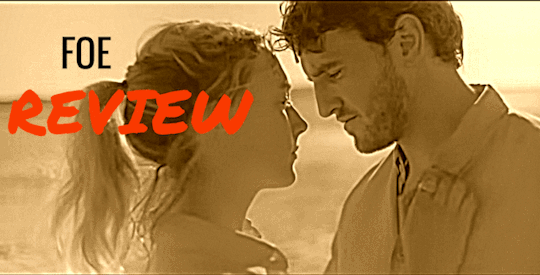
View On WordPress
0 notes
Text
Exciting news is brewing in the world of cinema: Hollywood stars Tom Hiddleston and Willem Dafoe are in Kathmandu, Nepal, to begin work on the highly anticipated biographical drama Tenzing.
Insiders suggest they’re gearing up to bring Tenzing Norgay Sherpa extraordinary story to life.
Jennifer Peedom is at the helm, with spring 2025 marked as the start of principal photography, and Kathmandu, rich in mountaineering history, is the perfect backdrop.
Here’s what we know so far.
The Insider Scoop
According to our source in India, Tom Hiddleston, who’ll play Sir Edmund Hillary, and Willem Dafoe, cast as Colonel John Hunt, are in Kathmandu to kick off pre‑production and possibly even some early filming.
This fits the spring 2025 timeline that the team announced.
While the production hasn’t made a formal announcement yet, word is that Tenzing is moving full steam ahead in Nepal.
About the Film: Tenzing
Tenzing celebrates Tenzing Norgay, the Nepalese‑Indian Sherpa who, alongside Sir Edmund Hillary, became one of the first people to summit Mount Everest on May 29, 1953.
The filmmakers aim to spotlight his remarkable journey, honor his cultural heritage, and highlight the vital role Sherpas play in mountaineering, stories that often get glossed over.
See‑Saw Films is producing, with support from Apple Original Films, promising both breathtaking visuals and a narrative with real heart.
The Cast
Tom Hiddleston as Sir Edmund Hillary: Best known as Loki in the Marvel universe, Hiddleston will portray the determined explorer who forged an iconic partnership with Norgay.
Willem Dafoe as Colonel John Hunt: The Oscar‑nominated actor (seen in Platoon and Poor Things) takes on the role of the expedition leader whose strategy made the historic ascent possible.
Tenzing Norgay: Casting for the legendary Sherpa is still under wraps, with the production committed to finding someone who can truly embody his spirit.
Casting for Tenzing Norgay
One intriguing possibility floating around is Tenzing Norgay Trainor, the actor and grandson of the climber, known for his work in Disney’s Liv and Maddie and Netflix’s Abominable.

His personal connection could bring an extra layer of authenticity, though the filmmakers have yet to confirm any names.
The Director
Jennifer Peedom, an Australian filmmaker who earned the Sherpa community’s trust through her documentaries Sherpa (2015) and Mountain (2017), is directing.
With a screenplay by Luke Davies (Lion), you can expect an approach that’s both respectful and deeply moving.
Why Kathmandu?
Kathmandu isn’t just a convenient shooting spot; it’s the heart of this story.
Roughly 160 kilometers from Everest Base Camp, its bustling markets, ancient temples like Boudhanath Stupa and Pashupatinath, and easy access to the Himalayas make it ideal for scenes depicting Norgay’s early life and the expedition’s final preparations.
If our intel is right, the cast and crew are already in full swing.
Hollywood’s History with Nepal
Nepal’s cinematic appeal isn’t new: Doctor Strange (2016) highlighted its mystical temples and winding streets, while Everest (2015) captured the raw power of the mountain itself.
With Tenzing, audiences worldwide will likely get another breathtaking glimpse of the Himalayas, and perhaps plan their own journeys there.
Production Details
Filming is slated to span both Nepal and New Zealand, with Kathmandu as the central hub.
Producers Liz Watts, Emile Sherman, and Iain Canning, known for their attention to detail, are overseeing the project, and Norbu Tenzing, the climber’s son, is on board as an executive producer to ensure cultural alignment.
While our source hints at significant activity already underway, the team seems determined to keep specifics close to the vest, perhaps to avoid crowds during filming.
#interesting speculation about who might play Tenzing#his IG seems to show he's very interested in his grandfather's story#Not sure if this is just speculation though#tom hiddleston#willem dafoe#tenzing#pre-production?
105 notes
·
View notes
Note
Tv shows and movies I’ve stopped watching because actors/creators are antisemitic, not forcing anyone to join the boycott but if anyone’s curious here’s the list.
House of the Dragon: lead actor Emma D’Arcy attended pro Palestine events, also author George RR Martin has declared Dorne (a region in Westeros) is based on Palestine.
Game of Thrones: numerous actors signed the Artsists4Ceasefire letter. Cast members including Charles Dance, Lena Heady and Tobias Menzies read transcripts of the ICJ ruling. Moreover, George RR Martin is friends with Xiran Jay Zhao who is openly anti Israel.
Wicked: Ariana Grande has shared links to Palestinian charities that have connections to Hamas.
Euphoria: Hunter Schafer was arrested alongside Jewish Voice for Peace after protesting Joe Biden, Zendaya has also shared donation links to pro Hamas charities.
Bridgerton: Nichola Coughlan has been openly anti Israel since Day 1.
Wednesday: Jenna Ortega called for the “decolonisation” of Palestine.
Derry Girls: the writer is pro Palestine and in the Season 2 finale a Palestinian flag is shown next to the Irish one.
Marvel: they removed Sabra’s Israeli identity to placate the social media demons, Mark Ruffalo is also still on their payroll.
Black Bag: Cate Blanchett signed the Artsists4Ceasefire letter.
Mickey 17: has Mark Ruffalo and Naomi Ackie.
From the World of John Wick: Ballerina: Ana de Armas unfollowed Gal Gadot after she refused to apologise for supporting Israel.
The Fantastic Four: First Steps: Pedro Pascal is pro Hamas.
The Bear: Ayo Edebiri continuously wears the antisemitic Ceasefire pin, whilst Gal Gadot was banned from wearing a yellow ribbon.
SNL: has invited multiple pro-Hamas guests since October 7th, most notable being Ramy Youssef. Numerous cast and crew members including Michael Che, Sarah Sherman, Chloe Fineman and Emil Wakim have expressed sympathy for Palestine.
I stress that I’m not forcing anyone to join the boycott, this is for anyone who simply doesn’t want to give money to people who hate Israel. Also if I missed anyone feel free to add them to the list.
.
39 notes
·
View notes
Text

‘Heartstopper’ To Wrap Nick & Charlie’s Story With Feature Film Finale On Netflix In Lieu Of Season 4
source: Deadline (X)
There is finally news for Heartstopper fans who have been patiently waiting to learn the fate of their show for more than six months. It may not be exactly what they were hoping for (Season 4), but it’s good news nevertheless: more Heartstopper is on the way, and Nick and Charlie’s story will get a proper ending.
Kit Connor and Joe Locke Set to Produce

Netflix has greenlighted a Heartstopper movie, starring and executive produced by the series’ leads Joe Locke and Kit Connor and directed by Wash Westmoreland (Still Alice, Colette), which will serve as a series finale. The announcement was made on the third anniversary of Heartstopper‘s April 22, 2002 premiere.
Heartstopper creator Alice Oseman, on whose graphic books the coming-of-age romantic series was based, is back as writer of the feature film, which will draw from the upcoming sixth and final volume of the graphic novel. (Season 1 covered Vol. 1-2, Season 2 was based on Vol. 3, and Season 4 followed Vol. 4 and 5.)
There is no publish date yet for Vol. 6, which is still being written. Oseman has indicated that ideally, the last book would drop ahead of the TV series’ conclusion.
In the Heartstopper finale, Nick (Connor) and Charlie (Locke) are inseparable, but with Nick preparing to leave for university and Charlie finding new independence at school, the reality of a long-distance relationship begins to weigh on them. Doubts take hold, and their relationship faces its biggest challenge yet. Meanwhile, their friends are also navigating the ups and downs of love and friendship, confronting the bittersweet challenges of growing up and moving on. Can first loves really last forever?
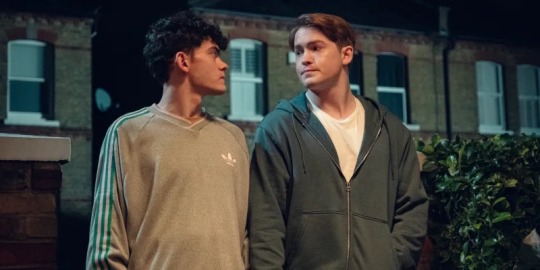
Westmoreland, who has an extensive feature background, succeeds Euros Lyn, who directed the first two seasons of Heartstopper, and Andy Newbery, who helmed Season 3.
Locke and Connor join the executive producer ranks of the movie alongside Oseman, Lyn, Patrick Walters, Iain Canning and Emile Sherman who all served as executive producers on the first three seasons. See-Saw Films is back as production company. Filming is slated to begin in summer 2025.
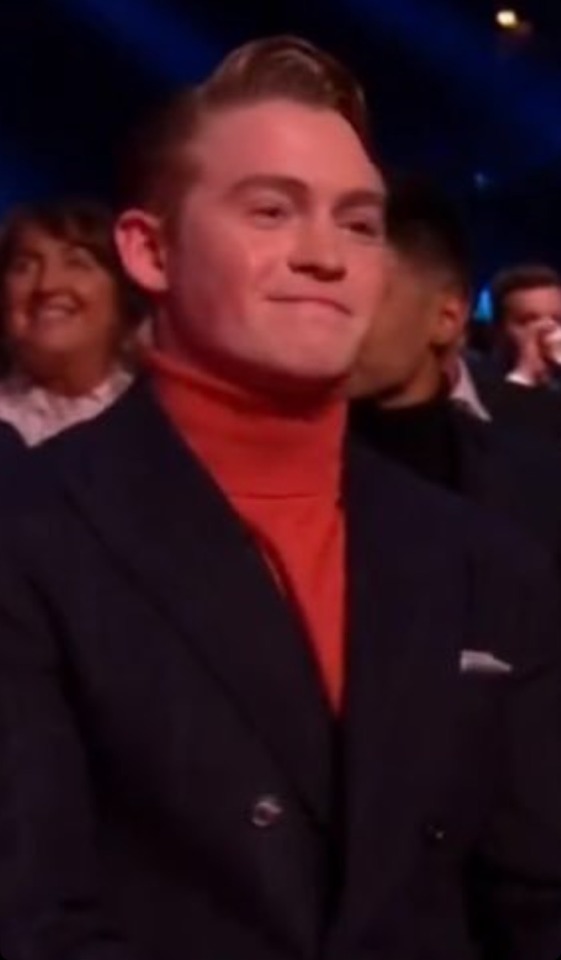
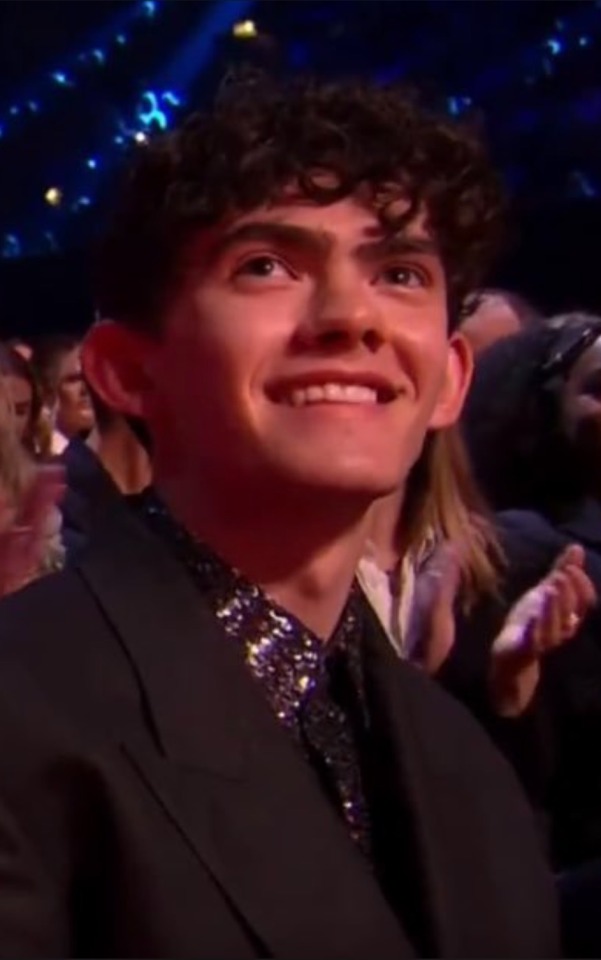
“I am completely overjoyed that we will get to tell the end of the Heartstopper story,” Oseman said. “I’m so grateful to everyone who has worked hard to make this possible and to the incredible fans of Heartstopper for your patience and passion. I cannot wait to bring this story to a magical conclusion.”
While rare, a movie series finale is not unprecedented – in 2017, Netflix commissioned a Sense8 film following backlash from fans when the streamer canceled the Wachowskis’ sci-fi drama after two seasons on a cliffhanger. Other shows given a movie conclusion by their networks include Timeless (NBC), CSI (CBS) and Deadwood (HBO).
Like most of them, Heartstopper found itself on the bubble after its third season drew 10.9 million views from its October 3 release until the end of 2024, down about 30% from the views Season 2 had garnered over the same period. Season 3 spent two weeks in Netflix’s global Top 10, peaking at No. 4, vs. three weeks each for Seasons 1 and 2, the latter peaking at No. 2.

Still, over the last six months of 2024, the first two seasons of Heartstopper added combined 8.8M views, showing continuing interest in the title on the platform.
What’s more, Season 3 was as well reviewed as the previous ones, nabbing another 100% score on Rotten Tomatoes, and continued to keep the series culturally relevant by tackling important issues, in this case mental health.
Most of all, it was Heartstopper‘s outsized impact across TV, social media, music and books and its legacy of LGBTQ+ representation that made the case for the show to get a proper ending even if the Season 3 viewership did not quite support a full-blown fourth and final season.

The movie greenlight follows tireless efforts by the series’ creative team.
“I’m working very hard behind the scenes to get us a renewal for Heartstopper… there are so many people behind the scenes who are working really hard to make it happen,” Oseman said in February. “We’re feeling optimistic, we’re feeling hopeful.”
A month later, Walters said that “there are lots of moving parts” on a potential renewal and “we are working hard on it.”
One of the many moving parts was likely making new deals with Connor and Locke, who reportedly no longer had options. Little known when they were cast in Heartstopper, the duo are now in-demand actors with busy schedules coming off starring roles in the movie Warfare (Connor) and Disney+’s Agatha All Along (Locke).
But, just like the cast of Euphoria recently reassembled for a final season, Connor and Locke had been willing to return to the series that made them stars.
“I’d definitely like to do it as long as it’s done right,” Connor recently said. “I just want to make sure that we keep the heart in it. So, we are working on something, and hopefully we’re making it happen.”

#heartstopper#alice oseman#nick nelson#kit connor#charlie spring#joe locke#heartstoppercentral#narlie#nick and charlie#osemanverse#nick x charlie#Netflix#netflix uk#heartstopper netflix#heartstopper tv#heartstopper show#heartstopper movie#heartstopper film#heartstopper comic#netflix announcement#heartstopper s4#heartstopper season 4#heartstopper series 4#mine#pin#pinned#deadline
37 notes
·
View notes
Text
Tom Hiddleston's Everest 🗻Thriller ‘Tenzing’ Lands at Apple.

“Tenzing,” a film about the true story of Sherpa Tenzing Norgay’s 1953 trek to the summit of Mount Everest alongside Edmund Hillary, has been snapped up by Apple Original Films.
Casting is underway for Tenzing while “Loki” star Tom Hiddleston is set to play New Zealand mountaineer Edmund Hillary. On May 29, 1953, Hillary and the Nepalese Sherpa, Tenzing Norgay, set foot on the summit of Mount Everest, the highest point on Earth. They had succeeded where others had failed, and had survived a journey that had taken the lives of great explorers before them.
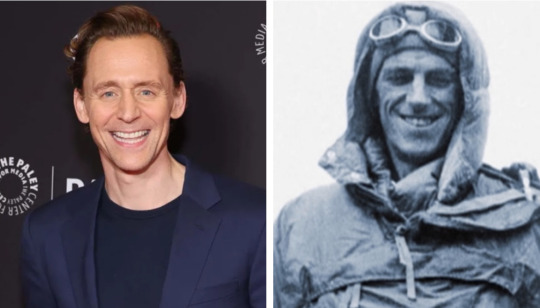
Willem Dafoe (“Eternity’s Gate”) as English expedition leader Colonel John Hunt. British army officer, mountaineer, and explorer John Hunt was best known for leading the 1953 expedition in which Edmund Hillary and Tenzing Norgay reached the summit of Mount Everest, the highest mountain (29,032 feet [8,849 meters]) in the world. Hunt described the venture in the book The Ascent of Everest (1953).

The film, produced by Oscar-winning producer See-Saw Films (The King’s Speech) is gearing up on Tenzing, about the inspirational life of Sherpa Tenzing Norgay and his summit of Mount Everest in 1953 alongside fellow outsider New Zealander Edmund Hillary, and directed by Jennifer Peedom, is currently in production, with casting still underway for the role of Tenzing Norgay. Jennifer Peedom has a close relationship with the Tenzing family and the Sherpa community following her acclaimed documentary, Sherpa.
Tibetan born Tenzing Norgay, alongside New Zealand mountaineer Edmund Hillary, both outsiders on a British Expedition, defied insurmountable odds to achieve what was once thought impossible, reaching the summit of the world’s tallest mountain, “ Mount Everest,” reads the logline. After six previous attempts, Tenzing risked everything for one final venture.
The film will tell the story of the British expedition which in 1953 finally conquered the hitherto unconquerable and reached the top-most peak of the highest mountain in the world - Mount Everest. An unforgettable achievement.
Caitríona Balfe is set to join the ensemble of Apple Films. Balfe will play ‘Jill Henderson,’ a friend of Tenzing who helped organise trips up Mount Everest. She was Honorary Secretary of the Himalayan Club between 1951–1955, and in this role she organised the Sherpa teams for several expeditions.. The Himalayan Club is an organisation founded in India in 1928 along the lines of the Alpine Club.
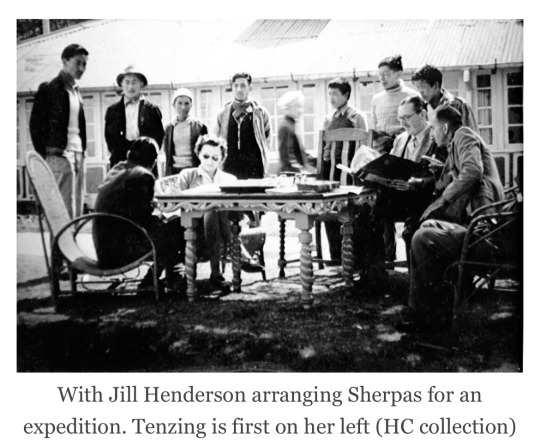
Jill Henderson was a key figure in the story of Tenzing Norgay and the 1953 Everest expedition. While not a direct family member, she played a significant role in encouraging Tenzing to participate in the expedition. But, Jill Henderson did not climb Mount Everest.
The Apple Original Films "Tenzing," is focuses on Tenzing Norgay's life and his summit of Everest with Edmund Hillary. Tom Hiddleston, Willem Dafoe, and the Himalayan cast are expected to bring the Sherpa’s story to life.
Lion writer Luke Davies is behind the screenplay. Producing is Liz Watts, Emile Sherman and Iain Canning for See-Saw Films, alongside Desray Armstrong, Peedom and Davies. (Apple and See-Saw have partnered on five seasons of the series Slow Horses.) Simon Gillis, David Michôd and Norbu Tenzing (son of Tenzing Norgay) will serve as executive producers.
Apple acquired the rights to the project in what was described as a “competitive situation” as Cannes kicked off. It is one of the first major deals to come out of the market.

Edmund Hillary (left) and Sherpa Tenzing Norgay reached the 29,035-feet summit of Everest on May 29, 1953, becoming the first people to stand atop the world's.
Two legends and Real hero's ✨
#EdmundHillary #TenzingNorgay #Everest #film #TomHiddleston #WillemDafoe #JohnHunt #Colonel #Britishexpedition #Sherpa #summit #mountaineer #JillHenderson #CaitríonaBalfe #AppleOriginalFilms #MountEverest #
Posted 6th May 2025
@kiaroa45 Yes, Sir Edmund and Louise Hillary founded the Himalayan Trust in the 1960s, they’ve inspired New Zealanders to give their time, money and support to help the people of Nepal through the Himalayan Trust.
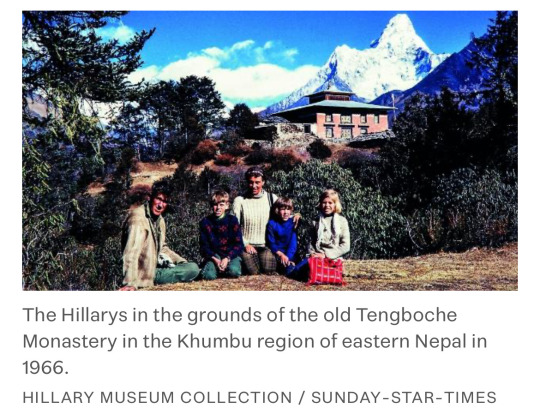
22 notes
·
View notes
Text
EXCLUSIVE: Oscar-winning producers See-Saw Films (The King’s Speech) are gearing up on Tenzing, about the inspirational life of Sherpa Tenzing Norgay and his summit of Mount Everest in 1953 alongside fellow outsider New Zealander Edmund Hillary.
A search is currently underway to cast the lead role of Tenzing Norgay who will star alongside BAFTA-nominated Tom Hiddleston (Loki) as Sir Edmund Hillary, and Oscar winner Willem Dafoe (Poor Things) as the English expedition leader, Colonel John Hunt.
Tenzing comes from filmmaker Jennifer Peedom who has the exclusive rights to tell Tenzing’s story via his family and has a close relationship with the Sherpa community after making acclaimed documentary Sherpa.
Script comes from Oscar-nominated Luke Davies (Lion) and producers are Liz Watts, Emile Sherman and Iain Canning for See-Saw Films, alongside Jennifer Peedom and Luke Davies. Executive producers are Simon Gillis, David Michôd and Norbu Tenzing.
Tibetan born Tenzing Norgay, alongside New Zealand mountaineer Edmund Hillary, both outsiders on a British Expedition, defied insurmountable odds to achieve what was once thought impossible, reaching the summit of the world’s tallest mountain, Mount Everest. After six previous attempts, Tenzing risked everything for one final venture. He had to navigate treacherous politics and perilous weather as he embarked on the most significant climb of his life. Through it all, he did so with humor, warmth, and generosity towards his fellow climbers, but also deep reverence and respect for the sacred Mother Goddess of his Mountain, Chomolungma.
This will be one of the hot projects at next week’s Cannes market where Rocket Science will be handling international sales in partnership with Cross City Films, See-Saw’s in-house sales arm. UTA Independent Film Group and Cross City Films are co-repping the U.S. sale. We understand filming is being lined up for spring 2025.
Peedom, known for her intimate portraits against epic landscapes, including documentaries Solo, Sherpa and Mountain, said: “I could not be more thrilled to be bringing Tenzing Norgay’s story to the screen. I’ve been working towards this film my whole career, and I’m incredibly grateful to Tenzing’s family for entrusting me with it. I am excited to work with See-Saw Films and our amazing cast to bring this story to life. Tom Hiddleston and Willem Dafoe are two of the most generous and talented actors in the business, so pairing them with our brilliant Himalayan cast is going to be electric. I have no doubt this film will resonate widely. We all have our own mountains to climb, and this film shows us what human beings are truly capable of.”
Producers Emile Sherman and Iain Canning added: “We are so excited to embark on this exhilarating ascent led by one of the most inspirational directors we’ve encountered, Jennifer Peedom. Her award-winning experience in the world of high-altitude filmmaking, alongside her unique relationship with the Sherpa community and her masterful storytelling skills make her the perfect director for this film.”
Norbu Tenzing, son of Tenzing Norgay, commented: “Jen is somebody who has earned the respect of our people, understands the community, and is deeply immersed in our culture. She’s a great human being and someone that we trust, and she has had a lifelong interest in the story of my father Tenzing Norgay. I am delighted that she has taken on this project and can’t wait for the world to see who my father was.”
Hiddleston is represented by UTA, Hamilton Hodell, and Johnson Shapiro Slewett & Kole. Willem Dafoe is represented by WME, The Artist Partnership, and Circle of Confusion.
118 notes
·
View notes
Text
Heartstopper Is Ending With A Feature Film
In lieu of a fourth and final season of Heartstopper, Netflix will release a feature film adapting the sixth volume of the series.
More info below:
Production details
Creator/Writer: Alice Oseman
Director: Wash Westmoreland
Based On The Book Series: Heartstopper by Alice Oseman
Executive Producers: Patrick Walters, Iain Canning, Emile Sherman, Alice Oseman, Euros Lyn, Joe Locke, Kit Connor
Production Company: See-Saw Films
Quote from creator and writer Alice Oseman: “I am completely overjoyed that we will get to tell the end of the Heartstopper story. I’m so grateful to everyone who has worked hard to make this possible and to the incredible fans of Heartstopper for your patience and passion. I cannot wait to bring this story to a magical conclusion."
Synopsis: Nick and Charlie are inseparable, but with Nick preparing to leave for university and Charlie finding new independence at school, the reality of a long-distance relationship begins to weigh on them. Doubts take hold, and their relationship faces its biggest challenge yet. Meanwhile, their friends are also navigating the ups and downs of love and friendship, confronting the bittersweet challenges of growing up and moving on. Can first loves really last forever?
17 notes
·
View notes
Text
youtube
The Founding Fathers (Lin-Manuel Miranda, Mikey Day, Andrew Dismukes, Chloe Fineman, Sarah Sherman, Michael Longfellow, Ashley Padilla, Emil Wakim) get interrupted by President Trump (James Austin Johnson) while signing the Declaration of Independence.
9 notes
·
View notes
Text
A white-looking guy: "I'm not white! I'm Lebense!
Also: "Arabs are just like Greeks and Italians"
Also: In the Middle East they'll support gay rights if you don't bomb them
So let's break this down:
Emil's friends in the Hezbollah bombed Israel
Emil's friends in the Hezbollah planned to massacre thousands of Jews and had their fights, weapons and tunnels ready
Despite that, Israel supports gay rights
But that's not good enough for Emil. He doesn't want Israel to protect its citizens.
Btw, Israel is not attacking Christian villages who oppose Hezbollah.
Turns out that if you fight terrorists for years, then when those same terrorists attack Israel, they won't come after you too.
If you spend years protecting terrorists, then you will certainly be hit by the ricochets.
Who side is Emil on? Not the Christians fighting for their lives.
5 notes
·
View notes
Text




The contestants have been finalized! Here's the bracket lineup!
So how this is going to work is, there's going to be 8 polls a day, starting tomorrow, until we hit semifinals. That means we'll do group A, B, C, D, then side AB, then side CD, then all the quarterfinals together. I'll update the images whenever we hit a new round.
Plain text Round 1 matchups under the cut:
(As a reminder, groups are formatted as [Dad name] & [Kid name]. So if there's multiple of either dads or kids, they'll use the word 'and.' Think of the ampersand like a separator.)
Group A
Bruno & Team Bucciarati (JJBA:GW) vs. Kanan & Ezra (SW Rebels)
Tony Stark & Peter Parker (MCU) vs. Lin & Asami, Mako, Bolin, Korra (LoK)
Balsa Yonsa & Chagun (MGotS) vs. Thancred & Ryne (FFXIV)
Aizawa & class 1A (MHA) vs. C!Philza & crew (DSMP)
Sojiro Sakura & the Phantom Thieves (Persona 5) vs. Tommy "Big Man" & Gus (Sweet Tooth)
Finn & Leif (FE) vs. Sandor & Arya (GoT)
Axel/Lea & Roxas and Xion + King Mickey and Riku (KH) vs. Artemy & Sticky and Murky (Pathologic)
Joel & Ellie (TLoU) vs. Darkwing Duck & Gosalyn Mallard (Darkwing Duck)
Group B
Pyrrha & Nona (TLT) vs. Kelsier and Vin (Mistborn)
Fukuzawa & Ranpo (BSD) vs. Miss Honey & Matilda (Matilda)
Jack Wynand & the Little Sisters (Bioshock) vs. Scar & Mei Chang (FMA)
Eda Clawthorne & King and Luz (TOH) vs. John Silver & Jim Hawkins (Treasure Planet)
Logan & Kitty and Jubilee (Wolverine) vs. Geralt & Ciri (Witcher)
Donquixote "Rosinante" Corazon & Law (OP) vs. Rouxls Kaard & Lancer (Deltarune)
Sully & Boo (Monsters Inc) vs. Simon & Marceline (AT)
Din & Grogu (The Mandalorian) vs. Bobby Singer & Sam and Dean (SPN)
Group C
Welt Yang & March 7th and the Trailblazer (Honkai Star Rail) vs. Jim Hopper & Eleven (Stranger Things)
Ingo & Irida and protagonist (PLA) vs. Gregor Samsa & Emil Sinclair (Limbus Company)
Nanami Kento & Itadori Yuuji (JJK) vs. Meta Knight & Kirby (Kirby)
Phoenix Wright & Trucy (AA) vs. Shirou & Michuri (BNA)
Yuugo and Lucas & 50 kids (The Promised Neverland) vs. Stan Pines & Dipper and Mabel (GF)
Date & Mizuki (AI:TSF) vs. Peabody & Sherman
Cabalena and Jowd & Lynne (Ghost Trick) vs. Pigsy and Tang & MK (LMK)
Kiryu & Haruka (+others) (Yakuza) vs. Tenmyouji & Quark (Zero Escape)
Group D
Silco & Jinx (Arcane) vs. Guts & Schierke (Berserk)
RGB & Hero (TPoH) vs. Father Garcia & John (FAITH)
Sam and Max & The Geek (Sam and Max) vs. Tom Wachowski & Sonic (Sonic movie)
Rei and Kazuki & Mira (BD) vs. Daud & Billie Lurk (Dishonored)
Chongi-re, Numeri and Butler (TRPC) vs. Jacob Holland & Maisie (The Sea Beast)
Reigen & Mob (MP100) vs. Maedros and Maglor & Elrond and Elros (Silmarillion)
Jean Valjean & Cosette (Les Miserables) vs. Loid & Anya (Spy x Family)
Batman & Robins (Batman) vs. Kurogane & Syaoran (Tsubasa Reservoir Chronicle)
34 notes
·
View notes
Text

Herbert Mundin, Diana Wynyard, Clive Brook, and Una O'Connor in Cavalcade (Frank Lloyd, 1933)
Cast: Diana Wynyard, Clive Brook, Una O'Connor, Herbert Mundin, Beryl Mercer, Irene Browne, Tempe Pigott, Merle Tottenham, Frank Lawton, Ursula Jeans. Screenplay: Reginald Berkeley, based on a play by Noël Coward. Cinematography: John F. Seitz. Art direction: William S. Darling. Film editing: Margaret Clancey.
There are lots of forgettable best picture Oscar winners: Who today watches The Great Ziegfeld (Robert Z. Leonard, 1936), The Life of Emile Zola (William Dieterle, 1937), or Gentleman's Agreement (Elia Kazan, 1947)? But Cavalcade may be the most forgettable (and forgotten) of them all. Based on a play by Noël Coward adapted by Reginald Berkeley and Sonya Levien, it's the saga of 33 years in the lives of a wealthy London couple, Robert (Clive Brook) and Jane Marryot (Diana Wynyard). Its portrait of their lives and the lives of their servants may have inspired the popular British TV series Upstairs Downstairs, and through it the even more popular Downton Abbey, both of which cover pretty much the same time period. In Cavalcade, as in the two TV series, the families suffer losses from the sinking of the Titanic and from World War I, and experience the social upheaval of a changing class system. But Cavalcade tries to cram it all into less than two hours, and tends to be more blatantly nostalgic about the passing scene. Unlike the creators of the later TV series, Coward and his adapters didn't have the benefit in 1933 of seeing what effect the events of the first third of the twentieth century would have on Britain and the world. It settles for a bit of prophecy in the form of a montage in which various talking heads rant about disarmament, communism, atheism, Christianity, and other ideologies, including a rather corny scene in a louche night club where same-sex couples seem to be on the verge of making out. (The film is pre-Code, so the strictures against depicting homosexuality haven't kicked in yet, though it's clear that the film -- despite Coward's own sexual orientation -- disapproves of it.) In addition to the best picture Oscar, Cavalcade also won a second Oscar for its director, Frank Lloyd, who had been the first director to be so honored, for The Divine Lady (1929). Wynyard also received a nomination for best actress, losing to a newcomer, Katharine Hepburn in Morning Glory (Lowell Sherman, 1933). Wynyard had a more successful career on stage than in movies. In Cavalcade she tries to register emotion by staring meditatively into the middle distance, often seeming like she has spotted something troubling on the wallpaper. The rest of the cast includes Herbert Mundin and Una O'Connor as the Marryots' servants, and Frank Lawton as Joe Marryot, the younger son, all three of whom would be reunited in a much better movie, David Copperfield (George Cukor, 1935). For the record, some of the films that Cavalcade beat for best picture include 42nd Street (Lloyd Bacon), I Am a Fugitive From a Chain Gang (Mervyn LeRoy), and Little Women (Cukor), all of which are more highly watchable today.
2 notes
·
View notes
Text
EXCLUSIVE: Caitríona Balfe is set to join the ensemble of Apple Original Films upcoming pic Tenzing, which already stars Tom Hiddleston and Willem Dafoe. Jennifer Peedom is directing the film. Peedom has a close relationship with the Tenzing family and the Sherpa community following her acclaimed documentary, Sherpa.
Oscar-winning producer See-Saw Films (The King’s Speech) is producing Tenzing, about the inspirational life of Sherpa Tenzing Norgay and his summit of Mount Everest in 1953 alongside fellow outsider New Zealander Edmund Hillary. Balfe will play ‘Jill Henderson,’ a friend of Tenzing who helped organize trips up Mount Everest.
Tibetan born Tenzing Norgay, alongside New Zealand mountaineer Edmund Hillary, both outsiders on a British Expedition, defied insurmountable odds to achieve what was once thought impossible, reaching the summit of the world’s tallest mountain, Mount Everest. After six previous attempts, Tenzing risked everything for one final venture. He had to navigate treacherous politics and perilous weather as he embarked on the most significant climb of his life. Through it all, he did so with humor, warmth, and generosity towards his fellow climbers, but also deep reverence and respect for the sacred Mother Goddess of his Mountain, Jomolungma.
Script comes from Oscar-nominated Luke Davies (Lion) and producers are Liz Watts, Emile Sherman and Iain Canning for See-Saw Films, alongside Desray Armstrong, Jennifer Peedom and Luke Davies. Executive producers are Simon Gillis, David Michôd and Norbu Tenzing.
Best known for her role as Claire Fraser in the hit Starz series Outlander Balfe currently co-stars alongside Rami Malek, Rachel Brosnahan, and Laurence Fishburne in 20th Century thriller The Amateur, an espionage thriller film directed by James Hawes and written by Gary Spinelli, based on the 1981 novel of the same name by Robert Littell. The film was released in theaters on April 11, 2025.
In 2024, Balfe starred opposite Orlando Bloom in the boxing drama The Cut, directed by Sean Ellis. The film follows a retired boxer who returns to the ring for one last shot at the title as he embarks on an intensive and illegal weight cut program with an unscrupulous trainer. It premiered at the Toronto International Film Festival on September 5, 2024.
As for her hit series, Balfe’s portrayal of ‘Claire Fraser’ has received critical acclaim in which she most recently received a Critics Choice Award nomination for her performance in Season 7 Part 2 of Outlander, which premiered on Starz on Nov 22, 2024.
She is repped by WME, Emptage Hallett (UK), Cognition and Jackoway Tyerman, Wertheimer.
37 notes
·
View notes
Text
youtube
Jesus Christ (Mikey Day) and his disciples (Kenan Thompson, Andrew Dismukes, Sarah Sherman, Ego Nwodim, Emil Wakim, Devon Walker, Michael Longfellow, Jane Wickline) get interrupted by President Donald Trump (James Austin Johnson) during the cleansing of the Temple.
0 notes
Text
SNL continues Trump Easter cold open tradition and brings back alumni for White POTUS sketch
Watch highlights from the eighteenth episode of SNL’s fiftieth season, hosted by Jon Hamm, with Lizzo as the musical guest, including the Trump Easter 2025 Cold Open. The cold open: Jesus Christ (Mikey Day) and his disciples (Kenan Thompson, Andrew Dismukes, Sarah Sherman, Ego Nwodim, Emil Wakim, Devon Walker, Michael Longfellow, Jane Wickline) get interrupted by President Donald Trump (James…
0 notes
Text
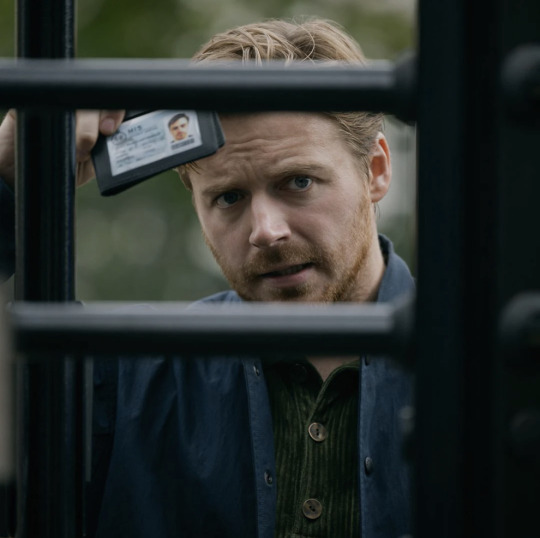
"Slow Horses,” Apple's TV highly acclaimed espionage drama returns for season three.
#GaryOldman returns to lead the Slough House team for a third season of #AppleTVPlus's #SlowHorses.
Slow Horses is a darkly humorous espionage drama that follows a dysfunctional team of British intelligence agents who serve in a dumping ground department of MI5 known un-affectionately as Slough House.
Slough House is an administrative purgatory for MI5 service rejects who have bungled their job but have not been sacked. Those consigned there are known as "slow horses”
youtube
In season three, a romantic liaison in Istanbul threatens to expose a buried MI5 secret in London. When Jackson Lamb and his team of misfits are dragged into the fight, they find themselves caught in a conspiracy that threatens the future not just of Slough House but of MI5 itself.
Oldman stars as Jackson Lamb, the brilliant but misanthropic leader of the spies, who end up in Slough House due to their career-ending mistakes as they frequently find themselves blundering around the smoke and mirrors of the espionage world.
The ensemble cast also includes Kristin Scott Thomas, Jack Lowden, Saskia Reeves, Rosalind Eleazar, Christopher Chung, Freddie Fox, Chris Reilly, Samuel West, Sophie Okonedo, Aimee-Ffion Edwards, Kadiff Kirwan and Jonathan Pryce.
Ṣọpẹ́ Dìrísù joins the season three cast as Sean Donovan, the former head of security at the British embassy in Istanbul, along with Katherine Waterston who plays Alison Dunn, an MI5 agent who uncovers a dark secret at the heart of the agency.

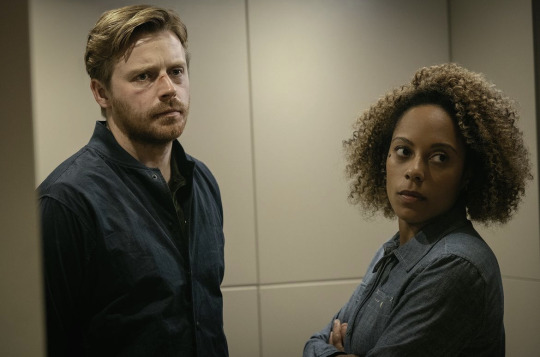
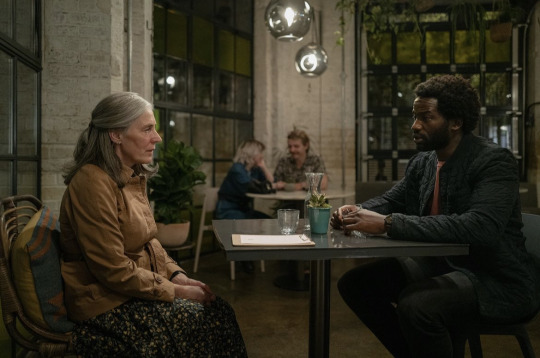
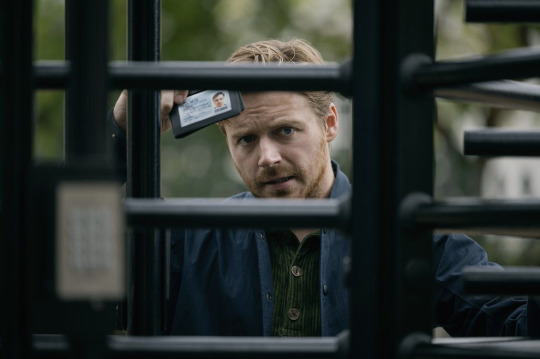

Adapted from Real Tigers, the third novel in the Mick Herron spy series, the six-episode third season of Slow Horses season three will begin streaming via Apple TV+ on Wednesday 29th November.
Slow Horses is produced for Apple TV+ by See-Saw Films and adapted for television by Will Smith (Veep).
Jamie Laurenson, Hakan Kousetta, lain Canning, Emile Sherman, Douglas Urbanski, Gail Mutrux, Will Smith, Jane Robertson and Graham Yost are executive producers on the series. Season three is directed by Saul Metzstein.
Apple TV+ previously announced a fourth season is set to be adapted from the fourth novel, Spook Street.
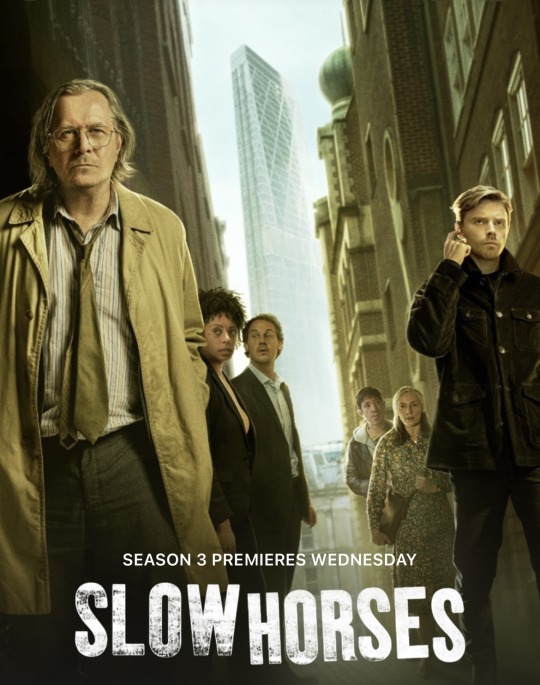
#SlowHorses #espionagedrama #SloughHouse #Britishintelligence #agents #MI5 #AppleTV #JacksonLamb
6 notes
·
View notes